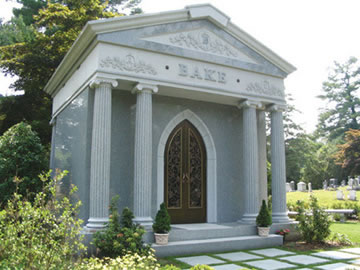 Earlier this week, we ran a post that featured insights from a funeral director on the odor management challenges that confront many funeral homes. The funeral director we interviewed actually wears two hats, and is also a Director of Cemeteries. Following are some key points from our discussion about odor management and cemeteries.
Earlier this week, we ran a post that featured insights from a funeral director on the odor management challenges that confront many funeral homes. The funeral director we interviewed actually wears two hats, and is also a Director of Cemeteries. Following are some key points from our discussion about odor management and cemeteries.
The most significant odor challenges at cemeteries come from managing mausoleums, which are the beautifully designed, free-standing structures that serve as burial niches for the deceased. Most mausoleums have interior rooms of varying sizes, as well as an indoor receiving chapel where loved ones can walk into a crypt that contains casketed human remains, all of which need to be heated and cooled, depending on the season, for the comfort of the living.
While the deceased are embalmed before being placed in the mausoleums, the process only serves to slow the pace of human decomposition. In addition, there are different degrees of decomposition depending on the circumstances under which a person passed away; for example, if they suffered from a lingering disease, experienced a very traumatic death due to severe injuries, or had an exorbitant number of bedsores, etc., there is a greater likelihood for more decomposing tissue.
While most caskets today are fully sealed and many mausoleums are properly vented, escaping odor risks are not fully mitigated. In addition, hot weather can intensify odors that can emanate from the caskets. Since these are highly enclosed spaces, it is vital to develop a solid odor management plan that uses eco-friendly cleaners to eliminate these odors – not mask them with chemicals and phony fragrances.
Families make significant investments to inter the remains of their loved ones in a mausoleum, making it all the more crucial to provide a welcoming environment where respects can be paid at anytime – even during a heat wave.
It should also be noted that a mausoleum is a highly sacred place where loved ones celebrate the deceased. If a foul odor does arise, the last thing a family member wants to experience is the smell of decomposing tissue. As such, ensuring that these environments are completely odor-free is paramount.
As we learned from our discussions with a funeral director and cemetarian, odor management is a major priority for the death care industry. Using the right odor mitigation solutions ensures that these environments remain sacred to family members who wish to eternally preserve the memories of their deceased loved ones.



